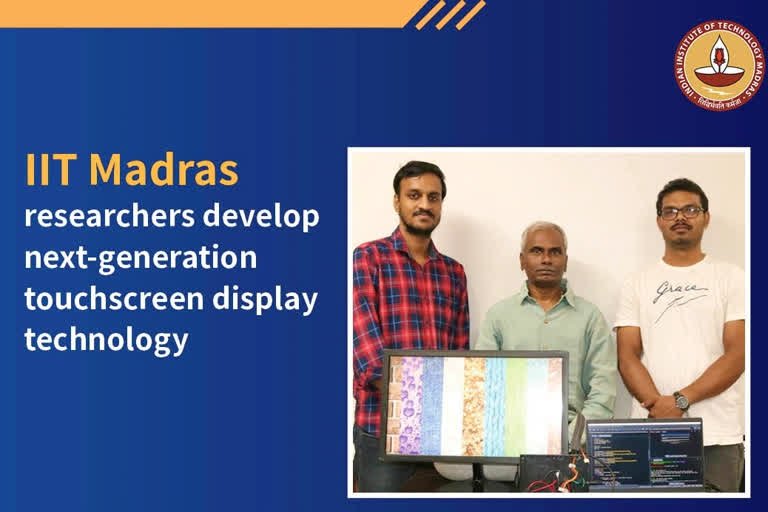Chennai: Indian Institute of Technology Madras (IIT-M) researchers have developed a new touchscreen display technology through which a user can feel the textures from images as the finger moves across the touch surface, said a statement from the premier institute. The existing touchscreens can only sense your location of finger touch, it said.
Named ‘iTad’, an acronym for interactive Touch active display, the institute touted it as the next generation in Touch Display technology. Through the use of software, the researchers can create different textures such as crisp edges, switches and rich textures that range from smooth to gritty. A new level of interaction comes alive on smooth physical surfaces.
There are no moving parts in iTad. Instead, an in-built multi-touch sensor detects the movement of the finger and surface friction is adjusted via software. By controlling electric fields via a physical phenomenon known as ‘electroadhesion,’ the software modulates friction locally as fingers travel across a smooth plane.
Will change online shopping experience
Merkel Haptics, a start-up incubated at the IIT Madras Research Park, has been working with the Touchlab researchers to take the technology forward. Highlighting the possible implications on electronic appliances, Prof M Manivannan of IIT Madras said the technology can take online shopping experience to the next level.
"We can touch and feel things before we buy from e-commerce platforms. Around 30 percent of returns to the online shopping are due to the mismatch of user experience. The primary reason is that their expectations which they had while they chose the product with the catalogue images are not met,” he explained.
Merkel Haptics CEO PV Padmapriya said the prototype from the Touchlab will be developed into a product within a year's time. "Our aim is to make a small device, similar to a computer mouse, on everyone’s desk to add to the experience. We have been field testing and providing feedback to the researchers at IIT Madras on improving the functionality of the technology,” she said.
The key applications of ‘iTad’ include automotive, consumer electronics, and digital signage, home automation, medical, industrial and gaming, aid for visually challenged, among other areas.
How does it work?
Explaining how this ‘iTad’ differs from contemporary technologies, Manivannan said the current computer touchscreens can only sense the position of our fingers on the screen, but would not offer any feedback. "When we add feedback, the interaction with computers becomes experiential. iTad is unlike anything else on the market today because it combines multi-touch sensing with haptics on the same layer,” he said.
The sensation of touch, or haptics, is unique among the senses in that it is bilateral and has two aspects rather than just one. iTad touch-enabled surfaces can both receive (sensing the finger position) touch input and provide touch feedback. Until now, the touch feedback has been limited to vibrations such as the one in mobile phones, which are called ‘Vibrotactile.’
A Resonating voice coil is used for providing the smartphone’s familiar buzz of alerts and confirmations. There are no moving pieces in surface haptics as iTad is a fully-integrated solution with a single controller and solid-state actuator. Textures and haptic effects, particularly big and curved displays, can be harmonized across size, shape and surface. iTad is a versatile solution with diverse applications. Every texture effect created through iTad can be felt with the swipe of a finger.




